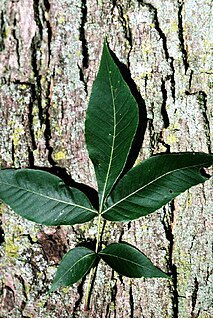| Acrobasis kearfottella | |
|---|---|
| Scientific classification | |
| Kingdom: | Animalia |
| Phylum: | Arthropoda |
| Class: | Insecta |
| Order: | Lepidoptera |
| Family: | Pyralidae |
| Genus: | Acrobasis |
| Species: | A. kearfottella |
| Binomial name | |
| Acrobasis kearfottella | |
Acrobasis kearfottella, Kearfott's acrobasis moth, is a species of snout moth in the genus Acrobasis . It was described by Harrison Gray Dyar Jr. in 1905, and is known from Quebec, Canada, and the eastern United States.

The Pyralidae, commonly called pyralid moths, snout moths or grass moths, are a family of Lepidoptera in the ditrysian superfamily Pyraloidea. In many classifications, the grass moths (Crambidae) are included in the Pyralidae as a subfamily, making the combined group one of the largest families in the Lepidoptera. The latest review by Eugene G. Munroe & Solis, in Kristensen (1999) retains the Crambidae as a full family of Pyraloidea.

Acrobasis is a genus of moths of the family Pyralidae.

Harrison Gray Dyar Jr. was an American entomologist.
The wingspan is about 20 mm. [2] There is one generation per year.

The wingspan of a bird or an airplane is the distance from one wingtip to the other wingtip. For example, the Boeing 777-200 has a wingspan of 60.93 metres, and a wandering albatross caught in 1965 had a wingspan of 3.63 metres, the official record for a living bird. The term wingspan, more technically extent, is also used for other winged animals such as pterosaurs, bats, insects, etc., and other aircraft such as ornithopters. In humans, the term wingspan also refers to the arm span, which is distance between the length from one end of an individual's arms to the other when raised parallel to the ground at shoulder height at a 90º angle. Former professional basketball player Manute Bol stands at 7 ft 7 in (2.31 m) and owns one of the largest wingspans at 8 ft 6 in (2.59 m).
The larvae feed on Carya species, including Carya tomentosa , Carya glabra , Carya ovata and Carya cordiformis . They feed on the newly expanding leaflets of their host plant from within a tube. The species overwinters in the larval stage. Pupation takes place within the tube. [3]

Carya tomentosa, is a tree in the Juglandaceae or walnut family. The most abundant of the hickories, common in the eastern half of the US, it is long lived, sometimes reaching the age of 500 years. A straight-growing hickory, a high percentage of its wood is used for products where strength, hardness, and flexibility are needed. The wood makes an excellent fuelwood, as well.

Carya glabra, the pignut hickory, is a common, but not abundant species of hickory in the oak-hickory forest association in the Eastern United States and Canada. Other common names are pignut, sweet pignut, coast pignut hickory, smoothbark hickory, swamp hickory, and broom hickory. The pear-shaped nut ripens in September and October and is an important part of the diet of many wild animals. The wood is used for a variety of products, including fuel for home heating.

Carya ovata, the shagbark hickory, is a common hickory in the Eastern United States and southeast Canada. It is a large, deciduous tree, growing well over 100 ft (30 m) tall, and can live more than 350 years. The tallest measured shagbark, located in Savage Gulf, Tennessee, is over 150 ft (46 m) tall. Mature shagbarks are easy to recognize because, as their name implies, they have shaggy bark. This characteristic is, however, only found on mature trees; young specimens have smooth bark.





